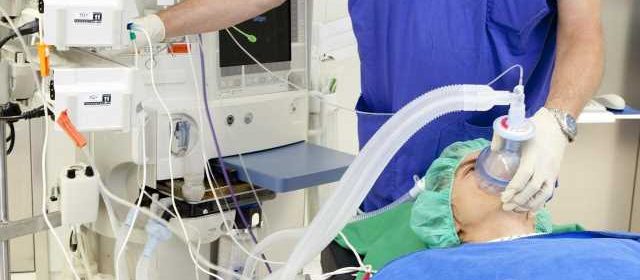Anesthesiology researcher pipeline lags behind other specialties


Anesthesiology researchers are responsible for some of medicine’s most significant advances, from the Apgar score that tests a newborn’s health to cardiopulmonary resuscitation (CPR). But the number of medical residents in the anesthesiology physician-scientist (researcher) pipeline trails other specialties, particularly among women, according to findings of the Anesthesia Research Council (ARC), published in the journal Anesthesia & Analgesia.
Out of 11 medical specialties, anesthesiology ranked eighth both for the percentage of entering residents with a “research-oriented” background and the percentage of anesthesiology residents who are women, according to the ARC working group’s analysis based on data from the National Resident Matching Program and Association of American Medical Colleges from 2009–2019.
ARC proposes a variety of recommendations to increase the size and diversity of the anesthesiology physician-scientist pipeline, from increasing the visibility of anesthesiology research to medical students, to expanding research fellowship opportunities, to incorporating child-care-friendly policies at national meetings facilitating attendance and career development.
“The research conducted by anesthesiology physician-scientists over the last few decades has led to a revolution in life-saving changes in perioperative medicine and remarkable improvements in safety,” said Charles W. Emala, M.S., M.D., chair of the ARC working group and vice chair for research at New York-Presbyterian/Columbia University Irving Medical Center, New York.
“But the public and even many physicians aren’t aware that the research anesthesiology physician-scientists are involved in extends beyond intraoperative anesthesia care and surgery itself, from understanding the basis of consciousness, to reducing organ injury during transplantation to addressing pain without the need for opioids and using interventional methods to relieve chronic pain.”
ARC was formed in 2019 by the American Society of Anesthesiologists (ASA), the Foundation for Anesthesia Education and Research (FAER) and the International Anesthesia Research Society (IARS) to address compelling issues in academic anesthesiology.
The number of physicians who focus on research—particularly in anesthesiology—has been inadequate to meet demands for decades. Efforts to increase the numbers have not made a meaningful difference, prompting ARC to tackle the pipeline as its first issue.
There are several reasons for the shortfall of medical students pursuing anesthesiology research pathways, starting with medical students’ reduced exposure to the specialty of anesthesiology.
The ARC working group’s survey of anesthesiology residency program directors revealed that only 46% of medical schools required students exposure to clinical anesthesiology, and when they do, the average time is two weeks, versus eight for other major specialties such as surgery, pediatrics and internal medicine, Dr. Emala said.
The working group did unearth some encouraging findings. They found anesthesiology ranked fourth out of 11 specialties for residents who identified themselves as belonging to an underrepresented group in medicine.
They also noted that since 2015, there has been a 70% increase in National Institutes of Health (NIH) funding to anesthesiology departments and a 70% increase in the number of NIH early scientist career development awards given to anesthesiologists.
To expand the size and diversity of the anesthesiology physician-scientists pipeline, ARC offers more than 40 recommendations within six categories:
- Medical student trainee initiatives, such as increasing financial support of FAER to expand the medical student summer research fellowship and having the specialty of anesthesiology represented at annual national meetings of medical students in the NIH-sponsored medical scientist training program (MSTP).
- Mentoring and professional development, including expediting full membership status for the Association of University Anesthesiologists to faculty demonstrating research or academic productivity.
- Training grants, such as awarding mentored foundation grants only to departments that demonstrate a culture of inquiry by investing in the continued development of physician-scientists.
- Supporting trainees with diverse needs, including by creating pipeline programs to identify and mentor underrepresented minority undergraduate students, medical students and residents who have an interest in becoming physician-scientists, as well as providing financial support for child-care needs during attendance and presentations at national meetings.
- Supporting anesthesiology leaders to expand institution research, such as embedding early-career physician-scientists within multi-disciplinary teams.
- Expanding academic anesthesiology by department chairs, such as by petitioning the Accreditation Council for Graduate Medical Education and the American Board of Anesthesiology to allow for expanded fellowships that enable one to two years of research.
More information:
The Anesthesiology Physician-Scientist Pipeline: Current Status & Recommendations for Future Growth, An Initiative of the Anesthesia Research Council (ARC), Anesthesia & Analgesia (2023).
Journal information:
Anesthesia & Analgesia
Source: Read Full Article